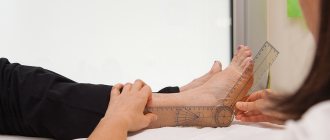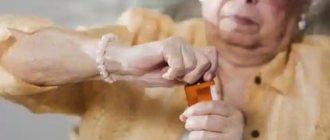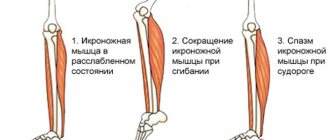The appearance of blue spots, stripes, dots or blue discoloration of the plate is a deviation from the norm. After all, a healthy nail is light pink in color, with a smooth surface. Why do my fingernails turn blue? Some of the reasons you can find out and eliminate yourself; to determine others, you will need medical help, additional examination and treatment. If in doubt, it is better not to delay and immediately contact a podiatrist.
Let's look at the factors that cause blue fingernails or toenails.
Injuries
These include bruises, blows, falling of a heavy object, pinching, squeezing. Why does the plate turn blue when injured? A hematoma or subungual hemorrhage forms under a fingernail or toe that is suddenly subjected to strong mechanical stress. This is what shines through in blue. The hematoma does not appear immediately, but on the second or third day after the blow.
The color of the injured area varies from red, bluish-purple to dark blue or even black, depending on the severity of the injury. Other symptoms include swelling, throbbing, aching or stabbing pain.
It's not just serious nail injuries that cause bluish discoloration. Sometimes it appears after a manicure or pedicure, if an inexperienced master accidentally damaged the matrix area, cuticle, or violated the integrity of the plate.
Domestic or professional injuries are the most common reasons why fingernails or toenails turn blue. If you are sure that there were definitely no injuries, you need to look for other factors that caused the color change.
Folk remedies
If the blueness under the fingernails or toenails is caused by wearing uncomfortable shoes, low-quality varnishes or cosmetics, or minor injuries, then traditional medicine can cope with it. Some recipes to solve the problem:
- Using lavender, lemon or tea tree essential oils. Apply a drop of the indicated products to each nail and begin to do a light massage, rubbing the oil in circular smooth and soft movements until it is absorbed. This will help cope with the fungus, increase blood flow and activate the growth of the plates.
- Therapeutic baths with herbal extracts and salt. For a liter of warm water, take two tablespoons of sea salt, a little sage or chamomile flowers, add soda and soap or bubble bath if desired. Leave your arms or legs for 30 minutes, then lubricate with nourishing cream and give a light massage.
- Contrast shower-massage. It will help strengthen the walls of capillaries, increase their elasticity and normalize blood circulation. Direct a gentle but strong stream of first cold, then hot water onto the affected limbs. Change the water temperature sharply, act one minute at a time for 10-15 minutes.
- Edible gelatin baths. They strengthen the nail plates and promote their growth, which is important if the blueness is caused by a bruise and slow growth. Take a tablespoon of edible gelatin for a glass of hot water, dissolve, cool, place your hands or feet for 10-15 minutes. After this procedure, the nails will stop flaking.
- Pepper mask. Accelerates blood circulation, increases air flow, eliminates the consequences of injuries and bruises, and normalizes metabolic processes. Mix 10 drops of water with half a teaspoon of ground red hot pepper, add hand cream to obtain a thick consistency. Warm the mixture, apply to damaged limbs for 15-20 minutes in an even layer. Rinse with warm water, lubricate with nourishing cream.
Diseases
Among the diseases, blue nails cause impaired blood circulation in the extremities, congestion, narrowing of the lumen of small or large vessels and, as a result, a decrease in the supply of oxygen and nutrients. Such vascular pathologies include diabetes mellitus, atherosclerosis, and Raynaud's disease.
In addition to problems with blood vessels, blue nails can be caused by:
- Westphal-Wilson disease. This is a genetic disorder that manifests itself in impaired copper metabolism. There is a blue discoloration of the lunula or white semicircle at the base of the nail;
- Cirrhosis of the liver;
- Respiratory diseases. Among them are bronchial asthma, chronic obstructive pulmonary disease, pneumonia, respiratory distress syndrome;
- Heart disease (congenital defect, chronic heart failure);
- Methemoglobinemia. With this disease, a lot of methemoglobin is present in the blood. This type of hemoglobin does not transport oxygen from the lungs to organs and tissues, which disrupts the transport function of the blood;
- True polycythemia or pathology of the hematopoietic system, in which the number of red blood cells increases.
With the listed internal diseases, in addition to blue nails, there will be other symptoms, which is important to consider when diagnosing:
- When blood circulation is impaired, changes affect not only the nails, but also the skin. They lose sensitivity, acquire a bluish tint, and become cool to the touch;
- Heart disease is accompanied by shortness of breath, pain in the sternum, on the left under the shoulder blade, increased fatigue, instability of blood pressure;
- In case of respiratory diseases, there is a cough, discomfort or chest pain;
- If there are problems with the liver, there is pain in the right hypochondrium, loss of appetite, nausea, yellowing of the skin, and stool disorders.
Treatment for blue nails
Blue fingernails (the cause can be accurately diagnosed only after undergoing an examination) are not only a cosmetic defect, so drug treatment is required, which is selected by a doctor.
Medicines
The choice of medications is made depending on the cause of the blueness of the nail plate.
| Cause of blue nails | Name of the drug and release form | Drug group | Rules of application |
| Injury | Ketanov, tablets. | Painkiller | Take 1 tablet no more than 4 times a day, no longer than 5 days. |
| Venitan, gel. | Eliminates swelling and inflammation, accelerates hematoma resorption | Use 2-3 times a day until the hematoma is eliminated. | |
| Dimexide, gels and solution. | Analgesic and anti-inflammatory | Dilute the solution with water in a ratio of 1:3 and use it as a compress 1-3 times a day. Leave for 30 minutes. Apply the gel 1-3 times a day. Treatment is carried out no longer than 10 days. | |
| Taking medications | Activated carbon, tablets, | Sorbent | Used to completely remove the drug from the body. Take at the rate of 1 tablet per 10 kg of weight no more than 3 times a day, no longer than 5 days. |
| Suprastin, tablets. | Antihistamine | To relieve inflammation and allergic reactions. Take 1 tablet 1-2 times a day for no more than 3 days. | |
| Vascular and circulatory disorders | Ascorutin, tablets. | Restore the condition of blood vessels | Take 1 tablet 2-3 times a day for 15-30 days. |
| Troxevasin, capsules and gel. | Take 1-2 tablets 3 times a day for 3-4 weeks. | ||
| Chimes, tablets. | Restore blood circulation | Take 1 tablet 3 times a day for 10-14 days. | |
| Liver diseases | Pancreatin, tablets. | The drug contains enzymes to normalize liver activity | Take 1-2 tablets 2-3 times a day for 14-30 days. |
| Phosphogliv, capsules. | Restores liver tissue | Take 1-2 capsules 3-4 times for up to 3 months. | |
| Polysorb, powder. | Accelerates the elimination of toxins, facilitating liver function | Dosage depends on weight (0.2 g per 1 kg), take for 5 days. | |
| Heart dysfunction | Aspirin cardio, tablets. | Painkillers, blood thinners and anti-inflammatory | Take 1 tablet every other day. The duration of treatment is prescribed by the doctor. |
| Enalapril tablets. | Lower blood pressure and dilate blood vessels. | Take 1 tablet 1 time per day. The course is selected individually. | |
| Pathologies of the pulmonary system | Teopek, tablets. | Normalize the activity of the pulmonary system | Take 400 mg of the drug per day for 3 days. |
| Pulmicort, solution for inhalation. | Hormonal agent for normalizing breathing | The dosage and course are prescribed by the doctor depending on the severity of the pathology. | |
| Hormonal disbalance | Duphaston tablets. | Contain progesterone | Take 1 tablet. from 5 to 25 days of menstruation for 3-6 months. |
| Regulon, tablets. | Normalize hormonal levels | Take 1 tablet from the 1st to the 25th day of menstruation for 3 months. | |
| Fungal infection | Lamisil, spray and ointment. | Antifungal | Use 1-2 times a day for 7 days. |
| Mikozan, serum. | Use 1-2 times a day for 3-5 weeks. | ||
| Diabetes | Metformin, tablets. | Normalizes glucose levels in the body | Dosage and course are prescribed individually. |
| Glucophage, tablets. | |||
| Raynaud's disease | Trental, tablets. | Dilate blood vessels and normalize blood circulation | Take 1 tablet 3 times a day. The course is assigned individually. |
| Pentoxifylline tablets. | Take 2 tablets 2 times a day. The duration of treatment is determined by the doctor. | ||
| Wilson's disease | Cuprenil, tablets. | Helps remove copper from the body | The dosage is selected individually. It is necessary to take tablets 4 times a day for 2 months. |
The exact course and dosage of drugs are selected individually based on the general condition of the patient.
Folk remedies
Blue fingernails (the physiological cause can be eliminated using folk remedies) can be restored using the following compositions:
- Dissolve 10 g of sea salt in 200 ml of warm water. Soak your fingers in the solution for 15 minutes. The product helps normalize the condition of the nail plates and accelerates the resorption of the hematoma;
- take a contrast shower for 10-15 minutes. This normalizes blood flow and helps strengthen blood vessels;
- Rub lavender oil into the nail plate and skin. The product restores nail tissue and improves blood flow;
- chop 2 cloves of garlic and squeeze out the juice. Apply lotions for 10 minutes. The product eliminates fungal infection;
- squeeze the juice from half a lemon. Treat your nails with the product and leave for 20-30 minutes. Rinse with water and lubricate the skin and nail plate with nourishing cream. Lemon lightens the blue under your nails.
These remedies are ineffective for cyanotic nails due to the development of pathology.
Surgical intervention
If the nail plate peels off, there is pus underneath it, or tissue atrophy develops, surgical removal of the nail is required. The procedure can be carried out in different ways (before performing them, it is necessary to first exclude the presence of contraindications):
- using a laser. It is used mainly in the presence of fungus on the nail plate. The method allows you to painlessly and without prior preparation eliminate both the nail and the infection;
- radio wave removal. Destruction of the nail plate occurs under the influence of radio waves;
- chemical therapy. During the procedure, the skin near the nail is treated with a protective composition. Next, a special composition is applied to the plate, and a bandage is fixed on top. After 4 days, under the influence of the ointment, the nail softens and easily comes off the skin;
- mechanical extraction of the nail. The procedure is performed under local anesthesia. The specialist separates the nail plate from the bed, followed by disinfection of the affected area.
To prevent damage to the subungual tissues, with any method of nail removal, a protective bandage is applied to the finger.
The doctor also discusses the conditions for caring for the finger during the rehabilitation period:
- the first 2-3 days may require a visit to the clinic to monitor the dynamics of tissue restoration; if necessary, the injured area is treated;
- It is not recommended to overload the hand and the finger itself. This may cause bleeding (some methods may cause injury to blood vessels);
- make sure that the protective bandage is not too tight, as this will disrupt the blood supply and the nail may grow crooked;
- After removing the bandage, until the new nail plate grows, careful hygiene is required. Additionally use disinfecting ointments.
If there is a pronounced pain symptom, the use of oral or external anesthetics is allowed.
Fingernails reflect a person's health status. If the nail plate exfoliates, has an unnatural color (yellow or blue) or crumbles, then this means the presence of internal pathologies or infectious dermatological diseases. To return the nail to its natural color and shape, you must first identify the cause.
Author: Kotlyachkova Svetlana
Article design: Vladimir the Great
Infections
Blue nails are observed with some bacterial and fungal infections.
One of them is pseudomony. This is what is called nail damage with Pseudomonas aeruginosa or green mold. The color is not pure blue, but heterogeneous, blue-green. Infection occurs during manicure or violation of the technique of applying artificial coatings. The infection develops in the space between the natural nail and the artificial material, where there is no oxygen, it is humid and there is a source of nutrition (natural nail cells). Pseudomonia occurs in people who are constantly in contact with water, detergents, and soil.
In the case of a fungal infection, a blue, or rather dark blue, color is observed, as a rule, only in an advanced stage, when most of the nail or even several neighboring nails are affected.
Diagnostics
The reason for the change in the color of the nail plate on the hands cannot always be determined independently. To confirm the diagnosis and prescribe treatment, an examination is required. To more accurately establish the pathology, it is necessary to know exactly how long ago the blue discoloration appeared on the nails.
To diagnose the disease, a specialist prescribes the following procedures:
- Visual inspection and collection of information:
- chronic diseases are identified;
- it is specified when the blueness of the nail occurred;
- the presence of additional symptoms is determined;
- predisposition to diabetes and cancer is clarified;
- The condition of the nail plate is assessed.
- Taking urine and blood tests. Based on the data obtained, the general condition of the patient is determined, diabetes and the presence of infection in the body are excluded or confirmed.
- Taking a scraping from the nail plate. It is necessary when a fungal infection is suspected to determine the type of pathogen.
- Biopsy to rule out/confirm the presence of cancer cells.
- Wood's lamp glow. It also helps identify fungal infections.
- ECG to detect cardiac dysfunction.
- X-ray to detect pathologies in the lungs.
If there is insufficient data from the above examinations, an MRI may be prescribed.
Other reasons
If you spend a long time outside without gloves or in insufficiently warm shoes in cold weather, blue nails cause hypothermia of the feet and palms. Moreover, along with the nails, the lips also turn blue. Why is this happening? In the cold, the vessels supplying the nail plates sharply narrow, blood flow slows down, and a characteristic bluish tint appears. This is a normal reaction of the body: by “saving” on the fingers, it maintains the desired temperature in the internal organs. After a massage or warming up in a warm bath, your nails will return to their healthy pink color. The main thing is not to stay in the cold for too long. As soon as you notice blueness, look for a warm place.
Why do pregnant women's nails turn blue? The reason is that against the background of hormonal changes and decreased immunity, melanin dyschromia or a disruption in the production of melanin pigment sometimes develops. An increase in melanin content in the upper layers of the skin turns the nail bed gray or blue. This condition is temporary and not scary, but requires consultation with a doctor.
The nail plate also acquires blue shades due to the dyes contained in dark varnishes. If you like bright blue or dark blue manicure, this could be the reason for your blue nails. Especially if the varnish is of poor quality and its coloring components penetrate deeply into the plate.
When to see a doctor?
In the absence of serious symptoms, especially if the nails turn blue due to bruises and contusions, then this is not a problem. But if blue nails persist for a long period of time or you suffer from pain and other unpleasant symptoms such as shortness of breath, then consult a doctor immediately.
To determine the cause of blue nails, your doctor should conduct a complete physical examination.
Blue nails can be a symptom of a serious illness. If the condition is severe, you may have trouble breathing, fatigue, or other signs of illness.
Remember that cyanosis occurs when there is low oxygen supply to the tissues, which is caused by poor circulation.
Although blue nails can be a warning sign of serious health problems, this is not always the case. Sometimes accidents and nail infections can be avoided through proper hygiene and safe habits during hard work.
Why do my fingernails or toenails turn blue?
Which of the reasons are typical for blue nails on the fingers or toes?
Injuries to the tips of the fingers occur at home or at work, due to an unsuccessful manicure. And also when playing sports, such as playing baseball. On the feet, the nails of the big toe and little finger suffer from injuries, as they are located at the edges.
Why do the nails on my big toes turn blue? Often it's a matter of tight or narrow shoes. The big toe bears the brunt of the body weight combined with the pressure from the inner wall of the shoe. Sports shoes also cause blue nails. This problem occurs among runners and football players. Due to increased load and pressure, a hematoma forms under the nail.
Another common cause of blue toenails is an advanced fungal infection. Diabetes mellitus and atherosclerosis also more often affect the vessels on the toes rather than on the hands.
Fungus
Blue nails
Very often, mycotic nail damage is the reason why the nails turn blue on the big toes. But most often, at the stage of the plate turning blue, the fungus is already quite advanced and is diagnosed by many other signs. However, a slight discoloration in a small area may well appear in the early stages. You can diagnose a fungus at an early stage using the following signs:
- Peeling and growths appear on the plate;
- The nail tissue becomes loose;
- The nail becomes thicker or thinner;
- The color of the plate or its section changes, it turns blue or yellow;
- Nails peel and break;
- Itching, redness or peeling of the skin around the affected plate appears.
Signs of this disease can appear individually or in combination. But if you have the slightest suspicion of this disease, you should immediately consult a doctor. Fungus is a fairly common reason why nails on the toes and also on the hands turn blue, because it is very contagious and at the same time difficult to cure. The following people are at risk of contracting this disease:
Changing nail color
- Aged people;
- Children and teenagers;
- Persons with reduced immunity;
- Pregnant and lactating women;
- Frequent visitors to swimming pools, solariums, public showers, fitness rooms, etc.;
- Persons living in the same apartment with the sick person.
It is important to remember that mycotic infection is a fairly serious disease that is difficult to treat. Therefore, you should not self-medicate, and at the first signs of the disease you should consult a doctor. In order for recovery to be as fast as possible, it is necessary to conduct a number of studies, which are only possible in laboratory conditions.
[yandex2] [google2]
Why do my child's nails turn blue?
In children, as in adults, blue nails are caused by injuries. For safe reasons, such pigmentation occurs after contact with coloring substances: paints, gouache, felt-tip pens, dyes that are used in creativity.
For children, the cause of blue nails is high temperature. Why do nails turn blue during fever? A sharp spasm of blood vessels disrupts heat exchange, the baby’s hands become cold to the touch, and the nails turn blue. To improve blood circulation, you need to intensively rub the baby's arms and legs. Give a warm drink, an antipyretic with an antispasmodic in a dosage and dosage form appropriate for the age.
In the first months of life, infants often have blue fingernails from the base to the middle. Why is this happening? Even though it looks scary for mommies, it's not a big deal. These are the features of the physiology, structure of nails and skin in infants. Thermoregulation has not yet been adjusted; the body is adapting to new conditions. Nails and skin are very thin; blood vessels can be seen through them. This “pattern” of nails is especially noticeable when the baby is squeezing an object with his hands or is a little cold. This goes away by the age of 2 months.
How to treat blue nails?
Now we know that nails turn blue for various reasons. This could be an injury, a bruise, or even dangerous diseases and conditions of the body.
To keep your nails beautiful, you need to lead a healthy lifestyle, which will benefit your entire body. Here are some simple habits.
Avoid injury and infection
Always keep scissors and other nail care tools clean. Never use other people's tools; they should be personal, just like a toothbrush.
Sharing uncleaned nail scissors can cause fungal or bacterial nail infections.
Make sure your toes and nails are trimmed promptly to prevent them from peeling or breaking. This also leads to infection. Wash your feet regularly.
Avoid injury to your nails by wearing work gloves when performing potentially hazardous work.
Nails always turn blue when there is a bruise. Some people try to pick out the collected blood under the nail with sharp objects. This cannot be done, as this opens the way for bacteria to enter the wound.
It’s better to let the nail grow at its own pace, then the bruise will go away. The only thing you can do in this case is to soak your fingers in cold water with ice, which will relieve some of the pain.
Increase hemoglobin
Eat right and don't go on crash diets. You may lose weight quickly, but your body will not receive any benefit.
Since hemoglobin is mainly made up of iron, be sure to include iron in your diet, which will help increase your hemoglobin levels.
Foods containing large amounts of iron include:
- Red meat;
- Almond;
- Oysters;
- Spinach;
- Lentils;
- Shrimps;
- Tofu;
- Liver.
Be sure to eat plenty of fresh fruits and vegetables to get your daily vitamin C intake: citrus fruits, berries, and dark green leafy vegetables. Ideally, your diet should consist of about 50% fresh fruits and vegetables.
Folic acid is also important for the production of hemoglobin. Foods high in folic acid include organ meats, bananas and peanuts.
If you are having trouble watching your diet, take a high-quality multivitamin with iron and vitamin C (500 to 1,000 mg per day) to help your body absorb iron better.
Vitamin supplements should also contain copper, as it is necessary for the absorption of iron.
Remember not to overdo your iron supplementation. The amount of the vitamin in a standard multivitamin supplement is sufficient, although you can continue to eat all foods rich in natural iron.
Iron from dietary supplements in large quantities has a negative effect on the liver, which cannot be said about natural iron from food.
The best way is to take a multivitamin with a small amount of iron in combination with foods high in iron.
Beware of problems with the circulatory system
We have already said that nails turn blue due to poor blood circulation. Eating a healthy diet significantly improves the efficiency of the circulatory system.
In addition to the healthy foods recommended above, you should also consume whole grains and low-fat dairy products.
In addition to proper nutrition, moderate physical activity also stimulates blood circulation. If you have time, then aerobic training two to three times a week will do, and if you don’t have enough time, then just do any physical activity for at least 30 minutes every day.
Walking, biking, swimming, dancing, exercising, or participating in any active activity you enjoy is a great way to improve your circulation, lift your mood, and reap many health benefits.
Even if you don’t have time for a full workout, be sure to get up and, in the intervals of free time, walk quickly or actively do cleaning and other household chores.
Watch your weight
Maintaining a healthy weight is very important for your health. Being excessively thin is just as harmful as being excessively fat.
If you are undernourished, you will quickly develop anemia due to a lack of hemoglobin in the blood, which is why your nails turn blue, among other problems.
Being overweight increases your chances of heart disease, high cholesterol, arteriosclerosis, high blood pressure, diabetes, and more. All of this causes or worsens poor circulation.
Develop healthy habits
Make sure your meals consist of about 50% fresh produce, 25% whole grains and 25% high-quality protein sources.
Drink plenty of clean filtered water . Good hydration is the foundation of health.
Fresh, clean water ensures the smooth functioning of all organs of the body. It flushes out toxins, helps blood circulate freely, improves the condition of joints, muscles, skin, hair, nails and any other part of the body.
Don't eat processed foods. As a rule, if food is in a box or can, it is not very healthy. Better eat fresh foods.
Don't drink soft drinks. Unfortunately, in today's society, many people turn to carbonated soft drinks filled with sugar, chemicals, artificial colors, flavors and caffeine when thirsty.
They are not useful, do not eliminate thirst, but only further enrich the body with toxins.
Limit your alcohol intake. Although some health experts claim that drinking alcohol in small doses is good for the body, only negative results are evident so far.
Alcohol contains a lot of sugar, which means extra calories, which is very harmful for people struggling with hypertension and diabetes.
Do not smoke. Nicotine, pesticides and other chemicals found in tobacco are extremely hazardous to health. Cigarettes dramatically increase the risk of cardiovascular disease. As we already know, poor blood circulation or low hemoglobin are the main causes of blue nails.
What to do if your nails turn blue?
If you don't know the reasons, it's best to see a doctor. The doctor will conduct a survey, examination, prescribe tests, and treatment. He will tell you what to do so that the situation does not repeat itself and does not cause complications.
How to treat injuries?
Minor injuries can be easily dealt with at home. First of all, you need to apply cold for 5 - 10 minutes to reduce pain and reduce hematoma. Ice, frozen foods, and a stream of cold water are used as cold. After providing such first aid, the injury site is treated with an antiseptic and, if necessary, the finger is bandaged. If the nail is very painful, take a painkiller. For speedy healing and resorption of hematomas, special ointments against bruises are used. In the future, the condition of the nail is monitored. They wait until the injured part grows back to cut it off.
If the injury is serious, the integrity of the plate is damaged, there is bleeding, you need to go to the doctor. With such an injury, there is a high risk of bacterial complications, accumulation of pus, and acute pain. To prevent this, the doctor will remove debris from the wound, thoroughly treat it with an antiseptic, and prescribe an antibacterial ointment. Sometimes the doctor pierces a small hole in the nail to release blood accumulated in the subungual space and relieve pressure and bursting pain. The puncture is done only if there is a risk that the plate will rise and separate from the nail bed. To reduce the likelihood of rejection, apply a tight bandage.
The healing period for injuries is long, taking from several weeks to months. If your toenail is injured, try to wear comfortable, closed shoes with a round toe during this time to avoid squeezing the injured area. For the first 2–3 days, it is recommended to stay at home and wear nothing.
What to do in case of internal diseases?
If there is poor circulation in the extremities due to diabetes mellitus or other vascular problems, the course of the underlying disease is treated and monitored, because changes in the nails are secondary. No procedure will have an effect if the provoking factor is not eliminated. If there are problems with blood circulation, there is a danger that the darkened tissues are already dead areas that must be removed to prevent infection of neighboring healthy tissues.
To find out what disease caused the changes in the nail plate, you will need to take tests and consult with the following specialists:
- cardiologist;
- endocrinologist;
- gastroenterologist;
- vascular surgeon.
How to fight infections?
If the cause of darkening of the plate is a bacterial or fungal infection, treatment begins with identifying the type of pathogen. Then local agents or a combination of local and systemic drugs are prescribed to destroy the pathogen. For a bacterial infection, treatment lasts 1–2 weeks, for a fungal infection – several months.
A bacterial infection is more dangerous than a fungal infection. It is characterized by an acute course and rapid spread. If you suspect a bacterial infection of the nail apparatus, you should consult a doctor as soon as possible, since the pathogen can enter the blood through the nail bed and cause infection of the body.
How can color change?
Nails may change their usual healthy color - this indicates changes in the body. Usually they are painted in a different shade when a certain disease has reached its limit and communicates this using the nail plate. A color that suggests this could be:
- black;
- blue;
- brown;
- yellow;
- green;
- white.
Black or purple color may be due to injury (bleeding or bruising under damaged covering). You may notice blood protruding from under the plate. The black discoloration most often disappears as the injury heals, but this may take several weeks. Sometimes the appearance of black color under the affected nail means damage to the matrix, the area where it first begins to form. If this is the case, the result will be that the nail plate will need to be removed and the matrix repaired. Melanoma can give a black appearance even to an intact plate.
Blue coloration can occur as a side effect of the medication. It is also caused by problems that reduce the amount of oxygen in the blood, such as asthma and COPD, severe anemia, cold exposure, peripheral arterial disease, or shock. Brown streaks typically occur in dark-skinned people and are only a cause for concern if they are recent or are actively changing. They may be caused by medication or malnutrition. The green color is caused by bacterial and fungal infections.
Pale whites can be caused by nutritional disorders such as anemia or zinc deficiency and other medical problems. White spots or streaks are associated with a minor injury (you may not even be aware of it). These symptoms can last for weeks or months and resolve on their own without any proper treatment.
A yellow tint occurs when the nail plate separates from the nail bed (onycholysis) due to injury, skin condition, or infection. It is also caused by medical problems: chronic lung disease or cancer. Nails can become yellow from smoking cigarettes or from using certain polishes, especially red polish.
Color and texture reflect a wide range of medical problems. Take a look at your nails and you'll notice subtle changes - there's a hint of white, a hint of pink, maybe some ripples or indentations in the surface. These changes may seem very similar to each other, but to a professional eye they provide valuable information about the general condition of the human body.
Sometimes patients are advised to check their lungs, since a bluish tint is a sign that not enough oxygen is entering the body (it may even turn out that there is fluid in the lungs). Nails often show warning signs for many other conditions, from hepatitis to heart disease, doctors say. The changes may be a sign of a local disease such as a fungal infection or a systemic disease (lupus or anemia). Sometimes doctors try to determine whether a person has anemia by looking at their fingernails. Pale whitish streaks indicate low hemoglobin and red blood cell levels, consistent with anemia. A lack of iron can cause the coating to become thin and concave, as well as slightly ribbed.
Your nails give many clues about what's going on inside you. Patients with lupus develop dodgy and angular blood vessels in the folds of the nails. Psoriasis causes splitting of the base of the bed. Heart disease causes the beds to turn red. Obsessive-compulsive disorder can manifest itself through constant biting of the plate. Even common disorders, such as thyroid disease, can cause abnormalities: dry, brittle nails.
When is a doctor needed?
Be sure to consult a doctor if:
- a blue tint is present not only under the nails, but also around them, spreading to all the tips of the fingers;
- the blue area causes intense pain;
- there is itching, redness, peeling of the skin around the nails;
- there is dizziness, weakness, headache, lack of appetite;
- shortness of breath bothers you even after minor physical exertion;
- the body is predisposed to pulmonary or heart failure, vascular pathologies;
- The blue color lasts for a long time.
What's happening to your nails?
Experts distinguish three stages of development of the pathological process:
- Central (primary)
Small spots and streaks appear in the center of the nail plate, or on one of the sides.
- Second
The spots and streaks grow, the nail begins to peel.
- Dystrophic (third)
The nail plate is destroyed and cracks form. The surface of the nail exfoliates, and the inflammatory process of nearby epidermal tissue begins.
Onychodystrophy is differentiated by different types, and the symptoms of each of them have their own characteristic features:
- Psoriatic
The nail changes in color and thickness, and streaks and dots are observed under the nail plate.
- Onychorexi
A crack appears on the free edge of the nail, which, in the absence of treatment, rises to the root part of the plate.
- Onycholysis
The splitting of the nail starts from the outermost part of the nail and spreads over the entire surface in later stages.
- Onychomadesis
If the hands and toes are injured, then pus accumulates under the nail, which subsequently causes it to peel off the entire nail plate.
- Koilonychia
The nail takes on a saucer shape, and noticeable dents form on the surface.
- Hapolonychia
The nail plate softens and becomes brittle.
- Onychogryphosis
The nail becomes thicker and becomes dull. The surface becomes rough and uneven.
- Scleronychia
The nail thickens and separates from the bed, acquires a brown or yellow tint, and also begins to grow more slowly.
- Trachyonychia
The top layer of the nail becomes rough, the shine is lost, and the plates peel off.
- Anonychia
A congenital disorder in which the nail is completely absent.
- Onychoschisis
A negative chemical or physical effect that causes transverse stripes to appear and the nail to take on a wavy shape.
How to prevent blue nails?
Many problems can be easily avoided by following preventive measures. And blue nails are no exception. What can you do to keep your fingernails and toenails healthy, retain their natural color, and not break, crumble, or peel?
- Use individual tools for manicure or pedicure, wipe them with an antiseptic before the procedure;
- Trim your nails correctly: on the feet - at a right angle, on the hands - with a rounded edge;
- Choose comfortable shoes made from natural, breathable materials. Make sure that the big toe does not rest against the toe of the shoe and that the nail on it does not bend. In summer, to minimize the risk of accidental injury, wear closed-toe shoes;
- Keep your feet clean, dry, warm;
- In cold weather, wear gloves and warm, spacious shoes to prevent your hands or feet from freezing;
- Be careful when working with heavy objects, cutting tools, drawers, doors;
- When contacting household chemicals, use protective gloves;
- To prevent and early detect nail diseases, get a medical manicure and pedicure every six months;
- Choose high-quality decorative varnishes, nail care products, and hand skin care products.
Treat your nails carefully, care for and protect them, check their condition with a podiatrist. As we found out, some causes of blue nails are not dangerous and the problem goes away on its own. And in some cases, you cannot do without medical help. To avoid complications, it is important to use it in time.
0 0
Prevention measures
To prevent the appearance of a blue tint on the nail plate, it is recommended to pay daily attention to caring for it and preventing aggressive exposure to external factors.
All rules prescribed by doctors are based on the reasons why darkening may reappear, so they are also prescribed for the entire period of treatment.
There are several recommendations for prevention:
- Do your manicure properly. To process nails, it is recommended to use a file instead of sterile nail scissors, moving it in one direction. The cuticle must first be pushed back with a pusher and then cut off with nippers. The free edge should not be cut close to the skin;
- Maintain personal hygiene, change your socks once a day;
- Wear spacious, comfortable shoes in which the toes do not rest against each other, but are in a natural state;
- Always wear personal footwear, even in saunas or water parks, to prevent fungal infections;
- When using chemical compounds, protect the surface of your hands with thick rubber gloves to prevent exposure to aggressive components;
- If there is mechanical damage to your fingers or hands, begin treatment immediately to prevent complications;
- In winter, do not neglect to wear warm gloves, mittens, and socks to prevent hypothermia of the sensitive area, which can lead to frostbite.
Also keep in mind that hands and feet should always be dry, since a humid environment promotes the growth of pathogenic bacteria, which quickly spread to the girl’s fingers.
And if you are getting a manicure in a salon, first make sure that sterile consumables and products are used, and that the master properly processes the free edge of the nail.
Call your doctor or nurse if you have:
- temperature rises to 100.4°F (38°C) or higher;
- chills.
- worsening of any symptoms;
- have any of the following symptoms around or under the nail: hot, hard, or painful skin;
- bright yellow or green discharge;
- bleeding;
- unpleasant odor;
- increasing redness or swelling;
- increasing pain or discomfort;
- redness;
to come back to the beginning
Eliminating symptoms
Tell your doctor or nurse if you have any symptoms of nail changes. You may be prescribed medication to relieve your condition.
Follow the recommendations below to help resolve these symptoms.
It is forbidden:
- take hot baths and immerse your hands or feet in hot water;
- wear tight gloves, socks, tights or shoes;
- doing anything that puts friction or pressure on your nails, such as walking long distances or wearing tight shoes;
- biting or tearing off nails.
Need to:
- Tell your doctor if you have diabetes, vascular disease, peripheral neuropathy, or an autoimmune disease. This may increase the risk of skin breakdown, slow wound healing, and infection.
- Ask your doctor or nurse if you can use cold compresses on your hands and feet while you are receiving chemotherapy. If so, start using them 15 minutes before each chemotherapy infusion and leave for 15 minutes after the end of the infusion. For more information, ask your nurse for the resource entitled Cooling your nails during taxane chemotherapy treatment.
- Eucerin®;
Other recommendations
- Use biotin (Appearex®) for brittle nails.
- If necessary, consult a podiatrist. A podiatrist is a doctor who specializes in treating feet, ankles, and legs.
- If you have any signs or symptoms of infection, take a 15-minute soak in your fingers and toes in the evenings with a mixture of equal parts white vinegar and tap water. Signs and symptoms of infection include: redness;
- secretion of fluid that may have an unpleasant odor;
- hot, hard, or painful skin;
- temperature rises to 100.4°F (38°C) or higher;
- chills.
Call your doctor if you have any signs or symptoms of infection.
to come back to the beginning










